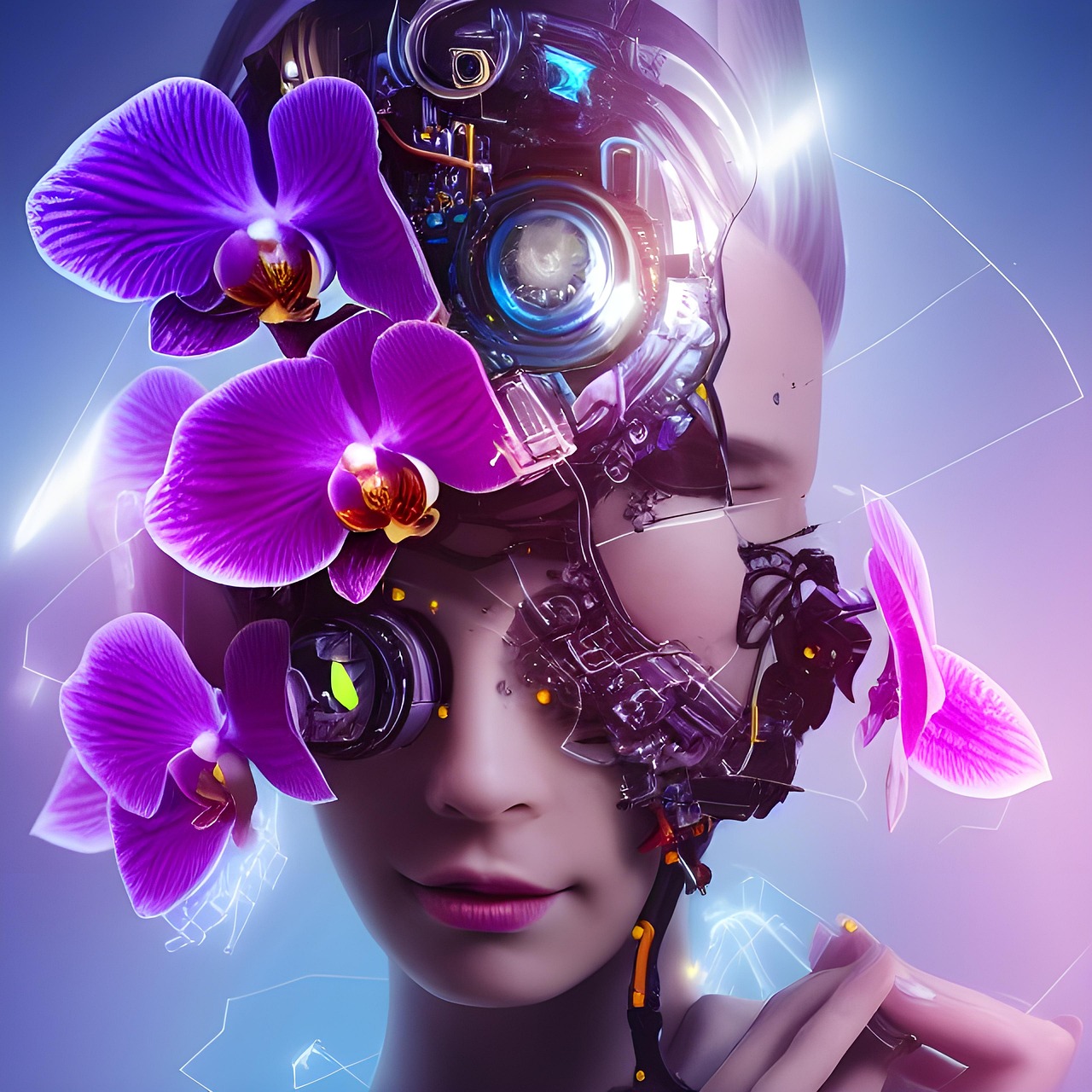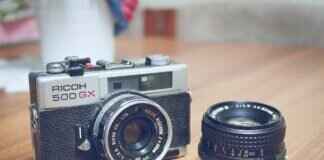Nude statue art has been a significant aspect of human expression, capturing the essence of the human experience throughout history. This article delves into the profound cultural implications and historical significance of nude sculptures, exploring how societal norms and artistic expression have transformed over time.
Nude statue art encompasses sculptures that depict the human body in its natural state, often celebrating beauty, vulnerability, and the complexity of human emotions. This genre has served as a mirror reflecting cultural values and artistic innovation across various eras.
Nude sculptures are pivotal in art history, acting as a reflection of societal values and philosophical ideals. From ancient civilizations to contemporary artistry, these sculptures reveal the evolution of human thought and expression.
The roots of nude statue art can be traced back to ancient civilizations such as the Greeks and Romans. These societies revered the human form, using it to explore themes of mythology, heroism, and the idealized human experience.
- The Greeks pioneered the art of depicting the human body, emphasizing idealized forms that celebrated physical perfection.
- Their works often conveyed themes of athleticism and divinity, integral to their cultural narratives.
While the Romans adopted Greek styles, they introduced a unique realism in their sculptures. This approach added depth and individuality, portraying subjects with distinct characteristics that reflected the diversity of human experience.
The Renaissance marked a pivotal revival of interest in nude sculptures. Artists like Michelangelo and Donatello meticulously explored human anatomy and emotion, blending classical influences with innovative techniques to create masterpieces that resonate to this day.
Cultural perspectives profoundly influence the interpretation and acceptance of nude art. These artworks reflect societal beliefs, values, and taboos regarding the human body and sexuality, shaping public perception and artistic direction.
- Eastern cultures often incorporate spirituality in their depictions, viewing the nude form as a representation of the divine.
- In contrast, Western art typically focuses on individualism and realism, emphasizing personal identity and human emotion.
Contemporary artists challenge traditional norms, using nude sculpture to provoke discussions on gender, identity, and body politics. These dialogues reflect modern societal issues and diverse perspectives, expanding the boundaries of artistic expression.
The techniques employed in creating nude statues vary widely, incorporating different materials, styles, and methods that reflect the artist’s intent and the cultural context.
- Historically, artists utilized materials like marble, bronze, and clay, employing techniques such as carving, casting, and modeling.
- These methods allowed for lifelike representations, capturing the essence of the human form.
Modern sculptors are redefining nude art by experimenting with unconventional materials and techniques. The integration of technology and mixed media challenges traditional boundaries, allowing artists to explore new dimensions of expression.
Nude art raises essential ethical questions regarding representation, consent, and objectification. These discussions are crucial in understanding the responsibilities of artists and the perceptions of viewers.
The portrayal of the human body necessitates careful consideration of consent, particularly concerning how subjects are represented and the implications of their depiction.
Navigating the fine line between objectification and celebration of the human form is vital in discussions about nude art. This balance influences societal interpretations and values surrounding these artworks.
The digital age has transformed nude art, allowing for new forms of expression and accessibility while raising questions about authenticity and artistic integrity.
Digital sculpture and 3D printing have revolutionized the creation of nude art. Artists can now experiment with form and scale in unprecedented ways, pushing the boundaries of traditional sculpture.
Social media platforms have become essential for artists to share nude art, fostering communities while also confronting censorship and societal backlash regarding nudity in art.
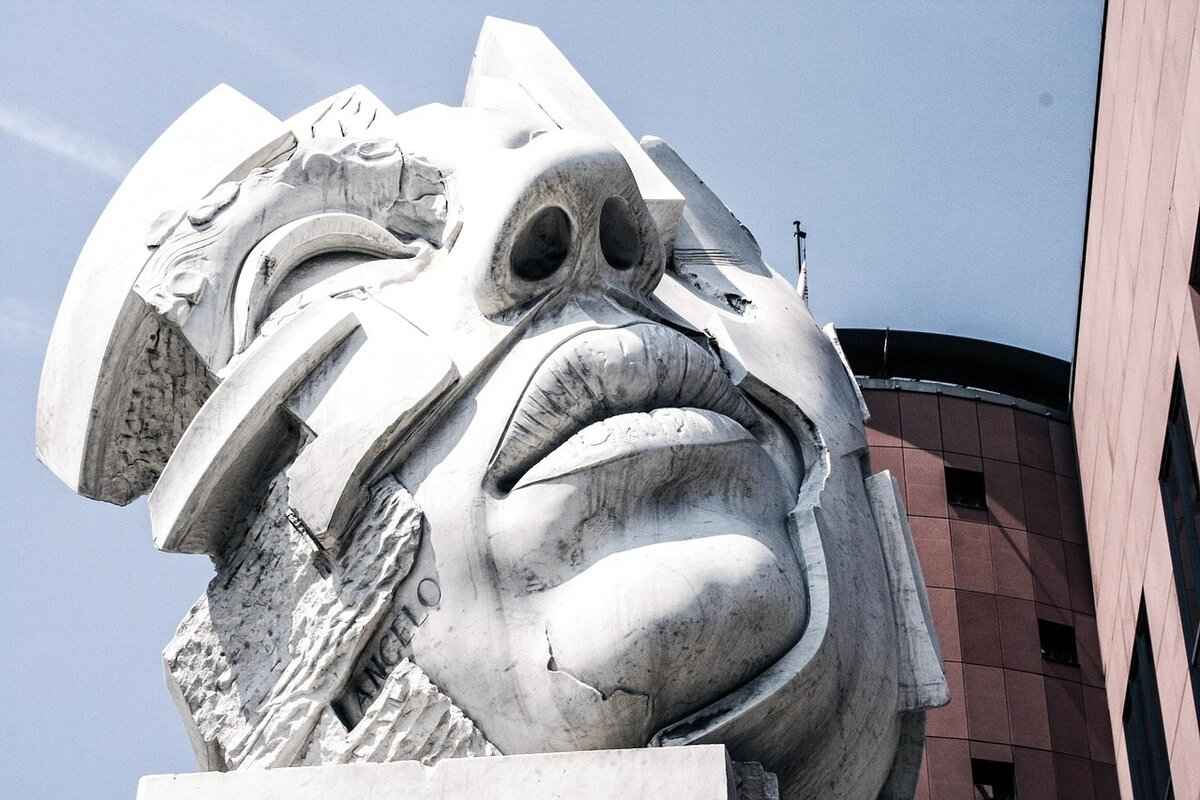
What is Nude Statue Art?
Nude statue art is a captivating genre of sculpture that focuses on the human form in its most authentic state. This form of artistic expression has transcended time, culture, and societal norms, evolving into a powerful medium that embodies beauty, vulnerability, and the multifaceted human experience. From ancient civilizations to contemporary art, nude sculptures have served as a mirror reflecting the values, beliefs, and artistic endeavors of various cultures.
Nude statue art is unique not only because of its subject matter but also due to its ability to evoke deep emotional responses. Artists have utilized the nude form to explore themes of identity, sexuality, and the human condition. This genre encourages viewers to engage with the artwork on a personal level, prompting introspection about their own perceptions of the body and beauty.
Throughout history, nude sculptures have played a pivotal role in shaping artistic movements. In ancient Greece, artists like Phidias and Praxiteles celebrated the human body, emphasizing idealized proportions that represented the cultural ideals of beauty and strength. The Romans further adapted these techniques, introducing a sense of realism that allowed for a more individualized portrayal of the human form.
The Renaissance marked a significant revival of interest in nude statue art, with artists such as Michelangelo and Donatello pushing the boundaries of anatomical accuracy and emotional depth. Their works, such as Michelangelo’s David, exemplified a harmonious blend of classical influences and innovative techniques, re-establishing the nude figure as a central theme in art.
The interpretation of nude statue art varies significantly across cultures. In Western traditions, nude art often emphasizes individualism and realism, while Eastern perspectives may incorporate spiritual or philosophical elements. This divergence reflects broader societal values and taboos regarding the human body and sexuality, influencing how art is created and perceived.
Modern artists continue to challenge traditional norms surrounding nude art. They often use the nude form to address contemporary issues such as gender identity, body positivity, and societal expectations. By doing so, they provoke critical discussions and encourage a reevaluation of how the human body is represented in art.
The techniques employed in nude sculpture vary widely, reflecting the artist’s intent and the cultural context. Traditional methods include carving from materials like marble and wood, as well as casting in bronze. In contrast, contemporary artists may experiment with mixed media, incorporating unconventional materials to create innovative representations of the human form.
Nude art raises important ethical questions regarding representation and consent. Artists must navigate the fine line between celebrating the human body and risking objectification. Discussions surrounding how subjects are portrayed and the implications of these representations are crucial in understanding the impact of nude art on society.
The digital age has transformed the landscape of nude art, enabling new forms of expression and accessibility. Technologies such as 3D printing and digital sculpting have allowed artists to explore innovative techniques, while social media platforms provide a space for sharing and discussing nude art. However, these advancements also raise questions about authenticity and the potential for censorship.
In summary, nude statue art remains a vital and evolving genre that captures the essence of the human experience. Its historical significance, cultural implications, and contemporary relevance make it a fascinating subject for exploration and discussion.
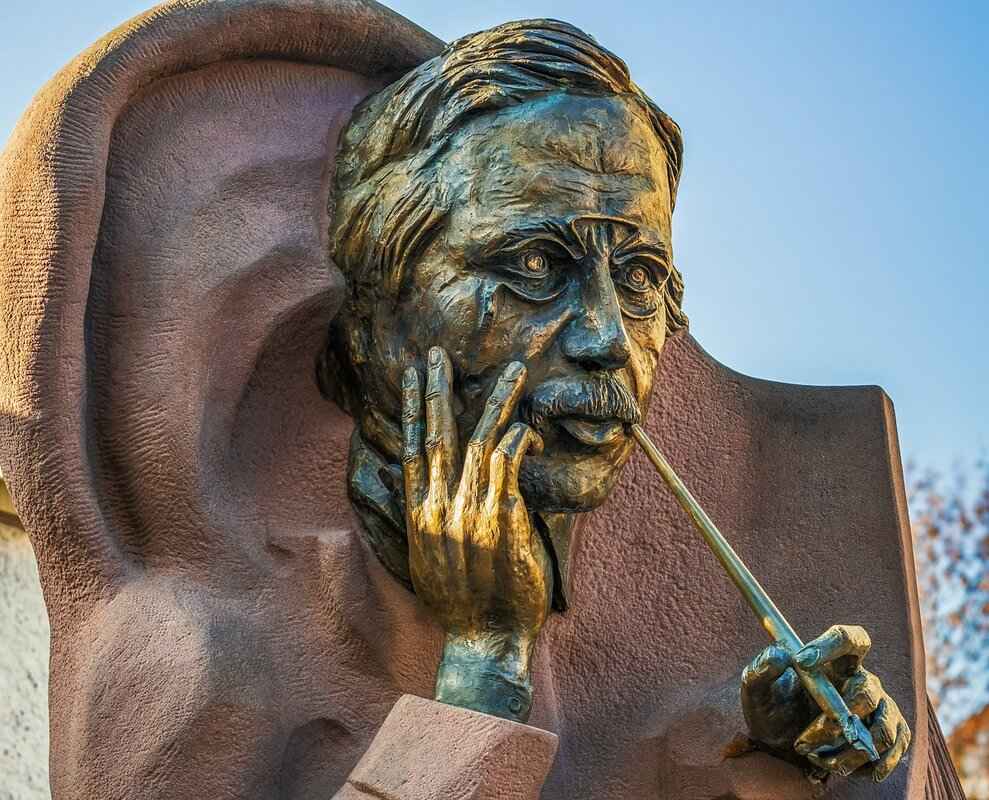
Why is Nude Sculpture Important in Art History?
Nude sculptures have long been a significant element in the tapestry of art history, transcending mere representation to become a profound reflection of societal values, artistic techniques, and philosophical ideals. From the ancient civilizations to contemporary expressions, these works of art serve as a mirror, revealing the evolution of human thought and creativity.
Nude sculpture is not just about the human form; it encapsulates the cultural narratives of its time. Throughout history, these sculptures have been pivotal in exploring themes such as beauty, mortality, and the human condition. They challenge the viewer to confront their perceptions of the body and identity, making them a vital part of artistic discourse.
In ancient Greece, nude sculptures celebrated the ideal human form, embodying the values of athleticism and beauty. Artists like Phidias and Praxiteles pushed the boundaries of realism, creating works that were not only aesthetically pleasing but also imbued with philosophical significance. The Greeks viewed the human body as a vessel of divine beauty, and their sculptures reflected this belief.
The Romans, while heavily influenced by Greek art, introduced a level of realism that added depth to the portrayal of the human figure. They captured the unique characteristics of individuals, moving away from the idealized forms of their predecessors. This shift marked a significant evolution in the representation of the human experience, making it more relatable and grounded in reality.
The Renaissance period marked a resurgence of interest in nude sculpture, with artists such as Michelangelo and Donatello exploring human anatomy in unprecedented detail. Their works, like Michelangelo’s David, not only showcased technical skill but also conveyed deep emotional resonance. This era emphasized the interconnection between art and human experience, setting the stage for future artistic movements.
Cultural norms play a significant role in shaping the interpretation of nude art. In Eastern traditions, for instance, nude sculptures often incorporate elements of spirituality, seeking to transcend the physical form. Conversely, Western art typically emphasizes individualism and realism, focusing on the subjective experience of the human body.
Modern artists continue to challenge traditional norms, using nude sculpture as a medium to provoke discussions about gender, identity, and body politics. This evolution reflects the shifting societal values and diverse perspectives of contemporary culture.
The techniques employed in nude sculpture have evolved significantly over time. Traditional methods involved materials such as marble, bronze, and clay, with artists utilizing carving, casting, and modeling to achieve lifelike representations. Each technique carries its own historical significance and artistic intent, contributing to the overall impact of the work.
In contrast, contemporary sculptors are exploring innovative materials and methods, integrating technology and mixed media to redefine the concept of nude art. This experimentation not only expands the possibilities of artistic expression but also engages with modern themes and issues.
The portrayal of the nude body in art raises important ethical questions regarding representation, consent, and objectification. Artists must navigate the delicate balance between celebrating the human form and avoiding its objectification. This discourse is crucial in understanding the responsibilities of artists and the perceptions of viewers.
As society continues to grapple with these complex issues, nude sculpture remains a vital and dynamic aspect of art history, inviting ongoing dialogue and reflection.
Influence of Ancient Civilizations
Nude statue art has a profound historical significance, particularly through the lens of ancient civilizations such as the Greeks and Romans. These cultures not only celebrated the human form but also used it as a medium to explore complex themes of mythology, heroism, and the essence of human existence. The artistic expressions of these societies have left an indelible mark on the evolution of sculpture, influencing generations of artists and shaping cultural perceptions of the human body.
The ancient Greeks were pioneers in the realm of nude sculpture, emphasizing the idealized human form. Their works often depicted gods, athletes, and heroes, showcasing an aesthetic that celebrated physical perfection and athleticism. This focus on the human body was deeply intertwined with their cultural values, where the pursuit of beauty and excellence was paramount.
- Philosophical Ideals: Greek philosophers like Plato and Aristotle discussed the concept of beauty, influencing artists to create sculptures that embodied these ideals.
- Religious Significance: Many nude statues were dedicated to deities, reinforcing the connection between art and spirituality.
- Techniques and Styles: The Greeks developed techniques such as contrapposto, which added a sense of movement and realism to their sculptures.
The Romans, while heavily influenced by Greek art, introduced a distinct approach to nude sculpture. They embraced realism, portraying individuals with unique characteristics, thus adding depth and personality to their representations. This shift reflected a broader cultural appreciation for individualism and realistic portrayal.
- Portraiture: Roman sculptures often included detailed facial features, capturing the essence of their subjects.
- Cultural Integration: The Romans incorporated elements from various cultures, enriching their artistic expression and expanding the narrative scope of nude art.
- Public Art: Nude statues became prominent in public spaces, symbolizing power and prestige in Roman society.
The influence of Greek and Roman nude sculpture extended far beyond antiquity, playing a crucial role in the Renaissance and subsequent art movements. Artists like Michelangelo and Donatello drew inspiration from classical forms, merging ancient techniques with their interpretations of human emotion and anatomy. This revival not only celebrated the human form but also reflected the evolving societal views on beauty and the human experience.
The study of nude sculpture from ancient civilizations offers valuable insights into the cultural and philosophical underpinnings of art. It challenges contemporary audiences to reflect on their perceptions of the human body, beauty, and the narratives that have shaped artistic expression throughout history. By examining these ancient works, we can appreciate the enduring legacy of nude art and its capacity to provoke thought and evoke emotion.
In conclusion, the influence of ancient civilizations on nude statue art is profound and multifaceted. The Greeks and Romans not only celebrated human beauty but also explored deeper themes that resonate through time, shaping the trajectory of artistic expression and cultural values. As we continue to engage with these works, we uncover layers of meaning that enrich our understanding of art and humanity.
Greek Contributions to Nude Sculpture
The represent a remarkable chapter in the history of art, characterized by a deep appreciation for the human body and its aesthetic potential. Ancient Greek sculptors were not merely artists; they were visionaries who sought to capture the essence of human beauty and athleticism in their works. This dedication to the idealized form has left an indelible mark on the art world, influencing countless generations of artists.
Greek nude sculptures are renowned for their idealization of the human form. Artists like Phidias and Polykleitos emphasized proportion, symmetry, and harmony. The contrapposto stance, where the weight is shifted onto one leg, adds a sense of dynamism and realism to the figures. This technique not only showcases the physical perfection of the body but also imbues the sculptures with a lifelike quality that resonates with viewers.
The Greeks viewed the human body as a reflection of divine beauty, intertwining art with their cultural narratives. Athletic competitions, such as the Olympics, celebrated physical prowess, and nude statues often commemorated victorious athletes. This cultural context elevated the nude form to a symbol of achievement and honor, reinforcing the idea that the body was a vessel for the soul.
Greek sculptors utilized various materials and techniques to create their masterpieces. The most common materials included marble and bronze. Marble allowed for intricate detailing, while bronze enabled more dynamic poses and greater durability. The lost-wax casting method was particularly popular for bronze sculptures, allowing artists to create detailed and expressive forms.
- The Discobolus (Disc Thrower) by Myron: This iconic statue captures the athlete in mid-action, epitomizing the Greek ideal of physical excellence.
- The Venus de Milo: Although slightly later, this Hellenistic masterpiece showcases the enduring influence of Greek ideals in its graceful form and beauty.
- The Doryphoros (Spear Bearer) by Polykleitos: This work exemplifies the use of contrapposto and is often cited as the epitome of classical proportion and balance.
The influence of Greek nude sculpture extends far beyond its time. During the Renaissance, artists looked back to Greek ideals, reviving the emphasis on humanism and anatomical accuracy. The appreciation for the nude form continued to evolve, with each era interpreting Greek principles through its own cultural lens.
Modern artists still draw inspiration from Greek nude sculptures, exploring themes of identity, beauty, and the human experience. Contemporary interpretations challenge traditional notions, reflecting current societal values and artistic expressions. As society continues to grapple with issues surrounding the human body and representation, the foundational work of Greek artists remains relevant and influential.
In summary, the contributions of the Greeks to nude sculpture are not only a testament to their artistic prowess but also a reflection of their cultural values. Their emphasis on the idealized human form has shaped the trajectory of art history, leaving a legacy that continues to inspire and provoke thought in the modern world.
Roman Adaptations and Innovations
The Roman adaptations of Greek artistic traditions brought about a significant transformation in the representation of the human form, particularly in the domain of nude sculpture. While the Romans were heavily influenced by the idealized styles of their Greek predecessors, they introduced a new dimension to art through realism and individuality. This shift marked a pivotal moment in the evolution of nude statue art, reflecting broader cultural and societal changes.
Unlike the Greeks, who often depicted figures in a state of ideal beauty, the Romans embraced a more naturalistic approach. They sought to portray their subjects with distinct characteristics, capturing not only the physical attributes but also the personality and emotional depth of the individual. This emphasis on realism allowed for a more relatable and human representation in art.
- Individuality: Roman sculptures often highlighted unique features such as wrinkles, scars, and other personal traits, moving away from the notion of a perfect human form.
- Contextual Representation: Many nude statues were created in the context of public spaces, serving not just as art but as a means of political or social commentary.
- Integration of Portraiture: The Romans skillfully blended the traditions of portraiture with nude sculpture, allowing for a more comprehensive representation of individuals.
Several renowned Roman sculptors played a crucial role in advancing the art of nude sculpture. One notable figure is Polykleitos, whose works emphasized the contrapposto stance, bringing a sense of movement and life to the figures. His influence can be seen in the way Roman artists adopted and adapted these techniques to create more dynamic representations of the human body.
The incorporation of realism in nude sculpture not only showcased the physical form but also conveyed deeper societal values. The Romans used nude art to celebrate heroism, virtue, and strength, often linking these ideals to their political narratives. Statues of emperors and military leaders frequently depicted them in the nude, symbolizing their divine status and heroic attributes.
The innovations introduced by Roman artists laid the groundwork for future artistic movements, particularly during the Renaissance. Artists like Michelangelo drew inspiration from Roman techniques, further exploring the complexities of the human body and emotion. The revival of classical ideals during this period can be traced back to the Roman emphasis on realism and individuality.
In conclusion, the Roman adaptations and innovations in nude sculpture represent a significant evolution in the art form. By integrating realism and individuality into their representations, Roman artists not only honored their Greek predecessors but also created a lasting legacy that influenced generations of artists to come. The emphasis on unique characteristics and emotional depth in nude statues continues to resonate in contemporary art, demonstrating the enduring impact of Roman contributions to the world of sculpture.
Renaissance Revival of Nude Art
The Renaissance was a pivotal period in art history, characterized by a renewed interest in classical antiquity and a profound exploration of human emotion and anatomy. This era saw the emergence of nude sculptures as a significant artistic expression, with renowned artists such as Michelangelo and Donatello leading the charge. Their works not only celebrated the beauty of the human form but also conveyed deep emotional narratives, blending traditional classical influences with innovative techniques.
The resurgence of nude art during the Renaissance can be attributed to several factors:
- Humanism: A philosophical movement that emphasized the value of human beings and the study of classical texts, leading artists to focus on the human condition.
- Scientific Advancements: Increased understanding of human anatomy through dissections allowed artists to depict the body more accurately.
- Patronage: Wealthy patrons, including the Medici family, supported artists, enabling them to explore themes of beauty and humanism in their work.
Michelangelo’s sculptures, particularly the iconic David, exemplify the Renaissance’s fascination with the nude form. Standing at over 17 feet tall, this masterpiece showcases the artist’s unparalleled skill in portraying anatomical precision and emotional depth. The tension in David’s pose and the intricate details of his musculature reflect not only physical beauty but also the psychological complexity of the human experience.
In contrast, Donatello’s work, such as the David (the first known freestanding nude statue since antiquity), introduced a different interpretation of the nude form. His bronze sculpture captures a youthful, contemplative David, emphasizing vulnerability alongside strength. Donatello’s ability to convey emotion through posture and expression was groundbreaking, marking a significant evolution in the depiction of the human figure.
Renaissance artists drew heavily from classical sources, yet they infused their works with a contemporary understanding of human emotion. The nude sculptures of this period often reflected a deep engagement with philosophical ideals and the complexities of the human psyche. Artists experimented with various materials and techniques, such as contrapposto, a pose that creates a sense of dynamism and realism.
The Renaissance revival of nude art set the stage for future artistic movements. The emphasis on the human form continued to influence artists through the Baroque period and into modern art. The techniques and emotional depth explored during the Renaissance laid the groundwork for the expressive possibilities of nude sculpture, inspiring generations of artists to come.
In summary, the Renaissance marked a significant turning point in the history of nude sculpture. Artists like Michelangelo and Donatello not only revived classical ideals but also expanded the boundaries of artistic expression by exploring the profound connection between the human body and emotion. Their contributions continue to resonate in the world of art, reminding us of the enduring power of the nude form as a vehicle for exploring the intricacies of the human experience.
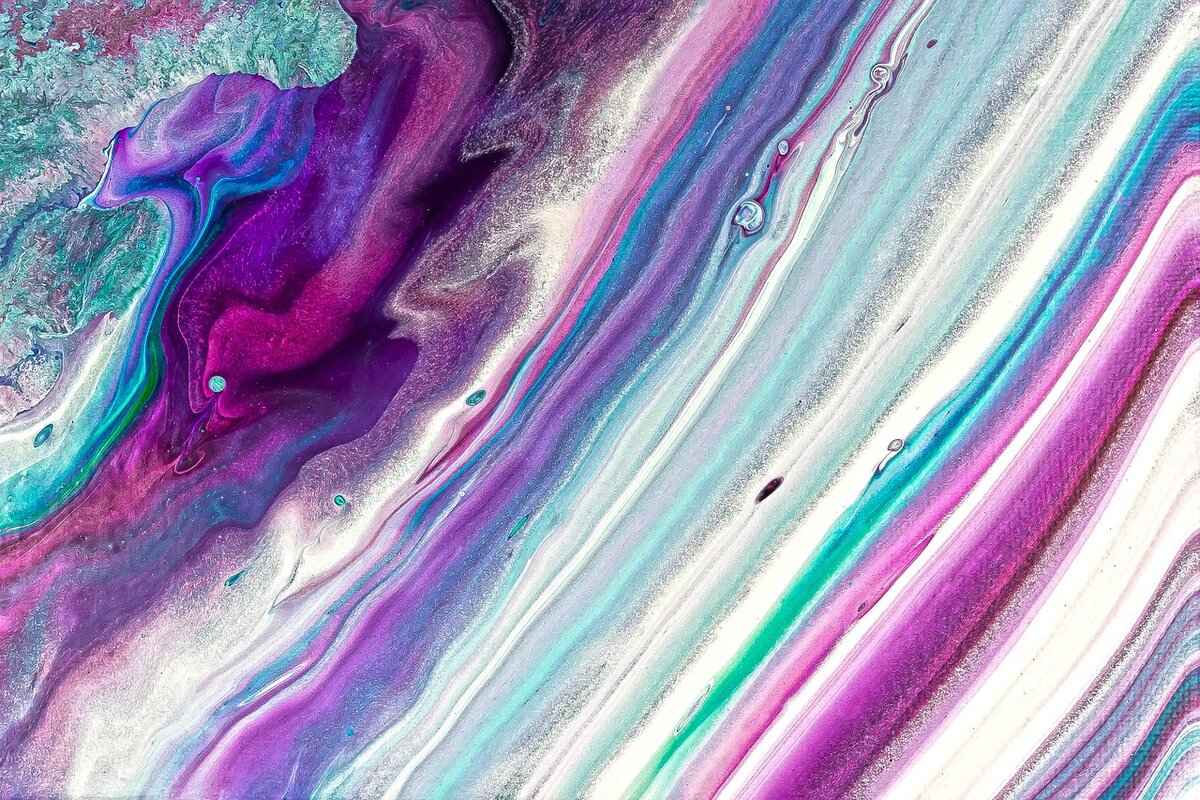
How Do Cultural Perspectives Shape Nude Art?
Cultural perspectives significantly shape the interpretation and acceptance of nude art, reflecting the societal values, beliefs, and taboos surrounding the human body and sexuality. As we delve into this topic, it becomes evident that the lens through which different cultures view nudity can profoundly influence artistic expression and public reception.
Nude art is not merely a representation of the human form; it is a reflection of cultural identity and historical context. Different cultures have their own narratives and attitudes regarding nudity, which can range from celebration to censorship. For instance, in many Western societies, nude art has often been associated with themes of individualism and personal expression, while in some Eastern cultures, it may carry spiritual or philosophical significance.
Throughout history, the perception of nude art has fluctuated based on prevailing cultural norms. In ancient Greece, for example, nudity was celebrated as a symbol of beauty and athleticism, reflecting the society’s admiration for the human form. Greek sculptures often depicted gods and athletes in the nude, highlighting the cultural appreciation for physical perfection.
Conversely, during the Victorian era in England, societal norms dictated a more conservative approach to nudity, leading to a period where nude art was often shunned or heavily censored. This illustrates how cultural attitudes can shift, impacting the acceptance and interpretation of nude art.
In contemporary society, the dialogue surrounding nude art has evolved, with artists increasingly using the medium to challenge societal norms and provoke thought. Modern artists often address issues of gender, identity, and body politics through their work, reflecting a more inclusive and diverse understanding of the human experience.
For instance, artists such as Marina Abramović and Yayoi Kusama have utilized nudity to explore themes of vulnerability and self-identity, pushing boundaries and encouraging audiences to rethink their perceptions of the body. This shift highlights how cultural perspectives are not static; they are dynamic and continually evolving.
The contrast between Eastern and Western interpretations of nude art is particularly noteworthy. In many Eastern cultures, nudity may be intertwined with spiritual beliefs, often seen in traditional art forms that emphasize the connection between the body and the divine. In contrast, Western art has historically focused on the individual and personal expression, with nude art often serving as a means of exploring human emotions and experiences.
In today’s digital age, social media platforms have become pivotal in shaping the discourse around nude art. Artists now have the opportunity to share their work with a global audience, fostering communities that celebrate the diversity of human expression. However, this accessibility also raises concerns about censorship and the societal backlash that can accompany the display of nudity in art.
Platforms like Instagram and Facebook have implemented strict guidelines regarding nudity, often leading to the removal of artistic content that challenges conventional standards. This ongoing tension between artistic freedom and societal norms reflects the complex relationship between culture and nude art.
As cultural perspectives continue to evolve, so too will the interpretation and acceptance of nude art. By understanding the historical and societal contexts that shape these views, we can gain a deeper appreciation for the role of nude art in reflecting and challenging cultural norms. The dialogue surrounding nude art is crucial in fostering a more inclusive understanding of the human body and its representation in art.
Eastern vs. Western Interpretations
Nude art has long been a subject of fascination and debate across cultures, reflecting deeper societal values and beliefs. When examining the Eastern and Western interpretations of nude art, one can observe a profound divergence in themes, techniques, and underlying philosophies.
In many Eastern traditions, nude art is often intertwined with spirituality and philosophical ideals. For instance, in India, the ancient practice of Kamasutra not only celebrates the beauty of the human body but also emphasizes the connection between physical intimacy and spiritual enlightenment. The sculptures found in temples, such as those in Khajuraho, depict not just the physical form but also convey the idea of divine union and the sacredness of love.
Similarly, in Chinese art, the human form is frequently portrayed in a manner that reflects harmony with nature. Artists often emphasize the inner essence of the subject rather than focusing solely on physical attributes. This approach aligns with the philosophical teachings of Daoism, which advocate for a balance between the material and spiritual worlds.
In contrast, Western art has historically gravitated towards themes of individualism and realism. The Renaissance period marked a pivotal moment in Western art, where artists like Michelangelo and Leonardo da Vinci sought to capture the human form with unparalleled detail and emotion. Their works often reflect a celebration of human achievement and the beauty of the individual.
Moreover, the Baroque and Neoclassical movements further emphasized the importance of the human body as a subject of artistic exploration. Artists aimed to portray the human experience in a way that resonates with viewers on a personal level, often using dramatic poses and intricate details to evoke emotional responses.
The differences in Eastern and Western interpretations of nude art are deeply rooted in cultural contexts. In the East, the representation of the nude form is often seen as a reflection of the spiritual journey and a celebration of the divine. This perspective allows for a more nuanced understanding of nudity, where the physical form is not merely an object but a vessel for deeper meaning.
Conversely, in the West, the focus on individualism and realism has led to a portrayal of the nude form that often emphasizes human emotion and personal identity. This approach can sometimes lead to the objectification of the body, as the emphasis on individual expression may overshadow the spiritual or communal aspects often found in Eastern art.
The contrasting approaches to nude art in Eastern and Western cultures raise important questions about the role of art in society. In the East, the integration of spirituality into nude art fosters a sense of reverence for the human body, encouraging viewers to contemplate their own existence and connection to the universe. In contrast, the Western focus on individualism can lead to a more fragmented understanding of the human experience, where the body is often viewed as a separate entity rather than part of a larger narrative.
Ultimately, the exploration of nude art across cultures highlights the complexity of human expression. By examining both Eastern and Western interpretations, we can gain a deeper appreciation for the diverse ways in which artists convey the essence of humanity through their work.
Modern Responses to Nude Art
Nude sculpture has long been a subject of fascination and controversy in the art world. In recent years, contemporary artists have taken bold steps to challenge traditional norms surrounding this genre. Through their innovative approaches, they provoke discussions on gender, identity, and body politics, reflecting the complexities of modern societal issues.
Contemporary artists utilize nude sculpture as a platform to confront and question established conventions. By portraying the human body in diverse and often unconventional ways, they aim to break down barriers and encourage viewers to reconsider their perceptions of beauty and vulnerability.
Gender representation is a central theme in modern nude art. Artists often explore the objectification of the female form, juxtaposing it with the empowerment of self-representation. This duality invites viewers to engage in critical conversations about how gender influences artistic expression and societal expectations.
Identity is another crucial element that contemporary artists address through nude sculpture. By incorporating elements of race, sexuality, and personal experience, they challenge the traditional narratives that have dominated art history. This approach allows for a richer, more inclusive dialogue about the myriad ways in which identity shapes our understanding of the human form.
Modern artists often draw inspiration from their own backgrounds and experiences, leading to a diverse array of perspectives in nude sculpture. For instance, artists from marginalized communities may use their work to highlight issues of representation and visibility, thus broadening the conversation around what nude art can represent.
The advent of technology has also transformed how artists create and present nude sculptures. Digital tools allow for experimentation with form and materials, enabling artists to push the boundaries of traditional sculpture. This evolution not only enhances the visual impact of the work but also invites viewers to engage with the art in new and interactive ways.
Contemporary artists often align their work with social movements, using nude sculpture as a means of activism. By addressing issues such as body positivity and mental health, they contribute to a larger cultural conversation that seeks to redefine societal standards and promote acceptance. This trend illustrates how art can serve as a powerful vehicle for social change.
Responses to modern nude sculpture vary widely. Some viewers embrace the provocative nature of the work, appreciating the challenge it poses to traditional norms. Others may feel uncomfortable, reflecting the ongoing societal struggles with nudity and body image. These varied reactions highlight the importance of dialogue in understanding and appreciating contemporary art.
As contemporary artists continue to explore the complexities of gender, identity, and body politics, nude sculpture remains a dynamic and evolving form of expression. By challenging traditional norms and engaging with pressing societal issues, these artists not only redefine the genre but also invite audiences to reflect on their own perceptions and beliefs.
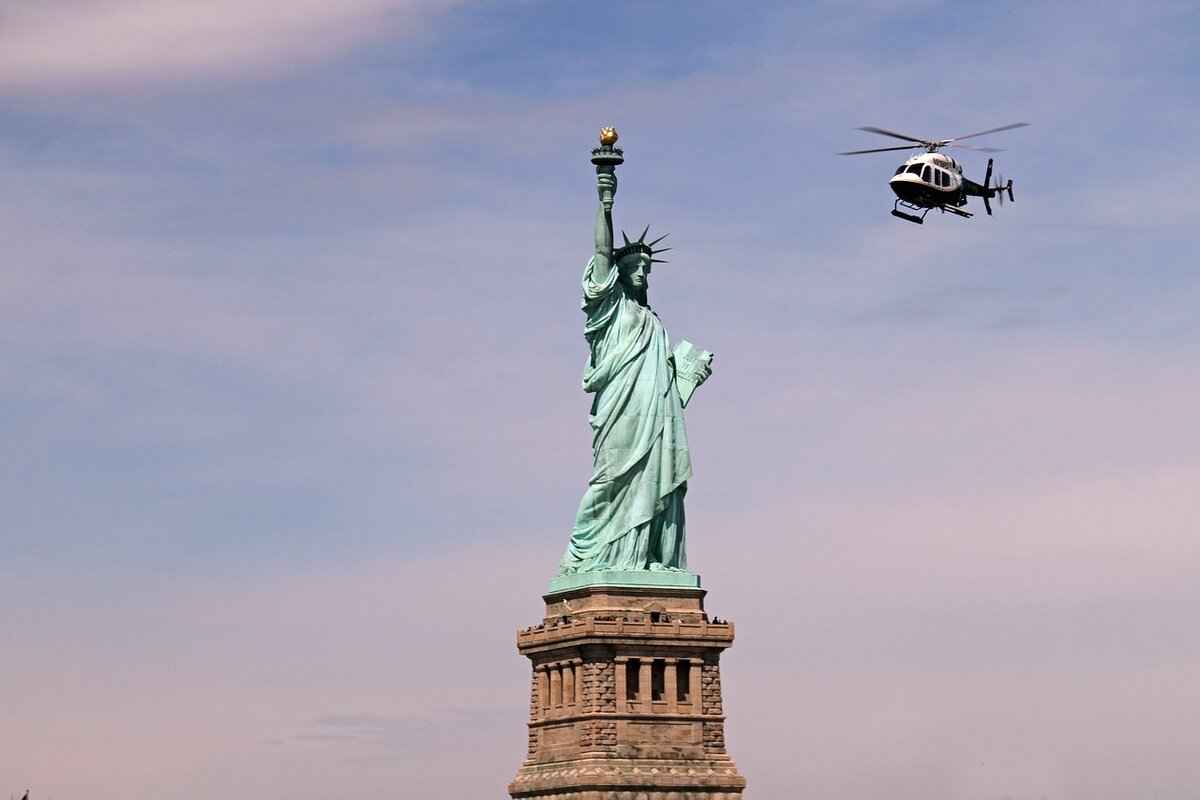
What Techniques Are Used in Creating Nude Statues?
Nude statue art has a rich and diverse history, with techniques that reflect the artist’s vision and the cultural context of the time. Understanding the techniques used in creating nude statues is essential for appreciating the artistry and intent behind these works. This article delves into the various methods and materials employed by artists, highlighting the evolution of nude sculpture through the ages.
The techniques used in creating nude statues vary widely, encompassing materials, styles, and methods that reflect the artist’s intent and the cultural context of the artwork. Artists have employed a range of approaches, from traditional craftsmanship to modern innovations, to capture the essence of the human form.
Historically, artists have relied on traditional materials such as marble, bronze, and clay. Each material offers unique qualities that influence the final outcome of the sculpture:
- Marble: Renowned for its ability to achieve fine detail and a smooth finish, marble has been a favored choice since ancient times. Artists like Michelangelo mastered the art of carving marble to produce lifelike representations.
- Bronze: This metal allows for a different approach, primarily through the casting technique. Bronze sculptures can capture intricate details and provide durability, making them ideal for outdoor displays.
- Clay: Often used for preliminary models, clay is versatile and allows for quick adjustments. Once the desired form is achieved, it can be cast in more permanent materials.
As society evolves, so do the techniques in nude sculpture. Contemporary artists are pushing the boundaries of traditional methods, incorporating innovative materials and techniques:
- Mixed Media: Artists are increasingly using a combination of materials, such as metal, glass, and found objects, to create unique textures and forms that challenge conventional representations of the nude.
- Digital Technologies: The rise of digital sculpture and 3D printing has transformed the creative process. Artists can now design intricate forms on computers and produce them physically, allowing for greater experimentation.
- Installation Art: Many contemporary sculptors are creating immersive experiences, where nude figures are part of larger installations that engage the audience on multiple sensory levels.
The choice of technique and material often reflects the cultural context in which the artist operates. For instance, in cultures where nudity is celebrated, artists may embrace more explicit representations, while in others, the approach may be more restrained:
- Western Art: Often emphasizes realism and individualism, showcasing the human body in a variety of contexts, from classical to contemporary interpretations.
- Eastern Art: Frequently incorporates spiritual elements, depicting the nude form within a broader philosophical or religious narrative, often focusing on the symbolic rather than the literal.
The techniques used in creating nude statues are not merely methods of construction; they are integral to the artistic expression and narrative of the work. Each choice—whether to carve, cast, or model—impacts how the viewer perceives the subject:
- Emotional Resonance: The texture and finish can evoke different emotions, from the smooth, polished surface of marble conveying elegance to the rougher textures of clay suggesting rawness.
- Interpretation of Form: Techniques can alter the viewer’s interpretation of the human form, influencing perceptions of beauty, vulnerability, and strength.
In summary, the techniques used in creating nude statues are as varied as the artists themselves. By understanding these methods, we gain insight into the cultural and historical significance of nude art, enriching our appreciation for this timeless genre.
Traditional Materials and Methods
Nude statue art has a rich history, with artists employing various traditional materials and methods to create stunning representations of the human form. The choice of materials not only reflects the artistic intentions but also the cultural significance and technological advancements of the time.
Artists have historically favored materials such as marble, bronze, and clay. Each of these materials offers unique properties that influence the final outcome of the sculpture.
- Marble: Renowned for its durability and beauty, marble has been a favored medium since ancient times. Its fine grain allows for intricate detailing, making it ideal for lifelike representations.
- Bronze: This metal is celebrated for its strength and ability to capture fine details through the casting process. Bronze sculptures can withstand the elements, making them suitable for outdoor displays.
- Clay: Often used for modeling, clay is a versatile medium that allows for quick adjustments and experimentation. Once fired, clay sculptures can be painted or glazed for added appeal.
Artists utilize a variety of techniques to bring their visions to life. The most common methods include:
1. Carving: This subtractive technique involves removing material from a solid block to reveal the desired form. It requires precision and patience, as mistakes can be irreversible.2. Casting: In this additive process, a mold is created to pour liquid material, such as molten bronze or plaster. This allows for the reproduction of intricate details and multiple copies of a sculpture.3. Modeling: This technique involves shaping a malleable material like clay or wax to create a three-dimensional form. It is often used for preliminary studies before the final piece is made in a more permanent material.
The evolution of techniques in nude sculpture reflects broader artistic trends and technological advancements. For instance, during the Renaissance, artists like Michelangelo advanced the carving technique, focusing on human anatomy to achieve a sense of realism that had not been seen before. The introduction of new tools and methods allowed for greater detail and expression.
In contrast, modern artists often blend traditional techniques with contemporary innovations. Some incorporate digital technology into their processes, using software to design sculptures before executing them in physical materials. This fusion of old and new not only expands the creative possibilities but also challenges the conventional definitions of nude art.
Understanding the materials and techniques used in nude sculpture provides insight into the cultural significance of the art form. Each choice made by the artist—whether it’s the selection of marble for its historical prestige or the use of clay for its malleability—communicates deeper meanings and reflects the values of the society from which it originates.
Moreover, the methods employed can influence how viewers interpret the artwork. For example, a carved marble statue may evoke feelings of permanence and idealism, while a clay model may suggest vulnerability and the artist’s creative process.
In summary, the exploration of traditional materials and methods in nude sculpture not only enriches our understanding of artistic practices but also highlights the interplay between art and culture throughout history.
Contemporary Innovations in Sculpture
In the realm of modern art, have emerged as a fascinating intersection of tradition and technology. Artists today are not only revisiting the classical forms of nude art but are also pushing the boundaries by incorporating unconventional materials and techniques. This evolution is reshaping how we perceive and engage with nude sculptures.
Today’s sculptors are breaking away from traditional materials such as marble and bronze. Instead, they are exploring a variety of unconventional materials that challenge the norms of sculpture-making. Some of these materials include:
- Recycled Objects: Artists are using everyday items, from plastic bottles to discarded metal, to create stunning sculptures that comment on consumerism and environmental issues.
- Digital Media: The integration of digital elements, such as LED lights and interactive components, allows for dynamic sculptures that change based on viewer interaction.
- Textiles and Fabrics: The use of soft materials, like fabric and fiber, contrasts with the hard surfaces of traditional sculptures, inviting a tactile experience.
Alongside material innovation, the techniques employed in sculpting have also evolved significantly. Modern artists are utilizing a range of advanced techniques that blend traditional craftsmanship with cutting-edge technology. Some notable methods include:
- 3D Printing: This technology enables artists to create intricate designs that were previously impossible to achieve by hand, allowing for greater experimentation with form and scale.
- Augmented Reality: Some artists are incorporating AR into their work, allowing viewers to experience the sculpture in a virtual space, enhancing the narrative and emotional impact.
- Mixed Media: By combining various materials and techniques, artists can create multi-dimensional works that challenge the viewer’s perception of the nude form.
Technology has become a vital component in the creation and presentation of nude sculptures. Artists are increasingly using software for design and modeling, which allows for precision and creativity. Moreover, social media platforms provide a stage for artists to share their work with a global audience, fostering community and dialogue around their pieces.
Through these platforms, artists can engage with viewers directly, receiving real-time feedback and sparking discussions about the themes and messages behind their work. This interaction not only democratizes art but also allows for a diverse range of interpretations and responses to nude sculptures.
The evolution of nude sculpture in contemporary art reflects broader cultural shifts regarding gender, identity, and body politics. Artists are using the nude form to challenge societal norms and provoke critical conversations about representation and inclusivity. For instance, many contemporary works celebrate diverse body types and challenge traditional notions of beauty.
Furthermore, the exploration of nudity in art has become a platform for discussing issues such as consent and objectification. Artists are increasingly aware of the responsibilities that come with depicting the human body, leading to more thoughtful and respectful representations.
Modern sculptors are redefining the concept of nude art by embracing a more inclusive and progressive approach. This includes:
- Challenging Gender Norms: Many artists are exploring themes of gender fluidity and identity, presenting the nude form in a way that transcends traditional gender binaries.
- Engaging with Social Issues: Sculptures often reflect current societal challenges, including discussions around body positivity, mental health, and the impact of social media on self-image.
- Interactive Installations: By inviting viewer participation, artists create immersive experiences that encourage deeper engagement with the themes of their work.
In conclusion, contemporary innovations in sculpture are not just about the materials and techniques used; they represent a broader cultural dialogue that continues to evolve. As artists push the boundaries of nude art, they invite us to reconsider our perceptions of the human body and the values we associate with it.
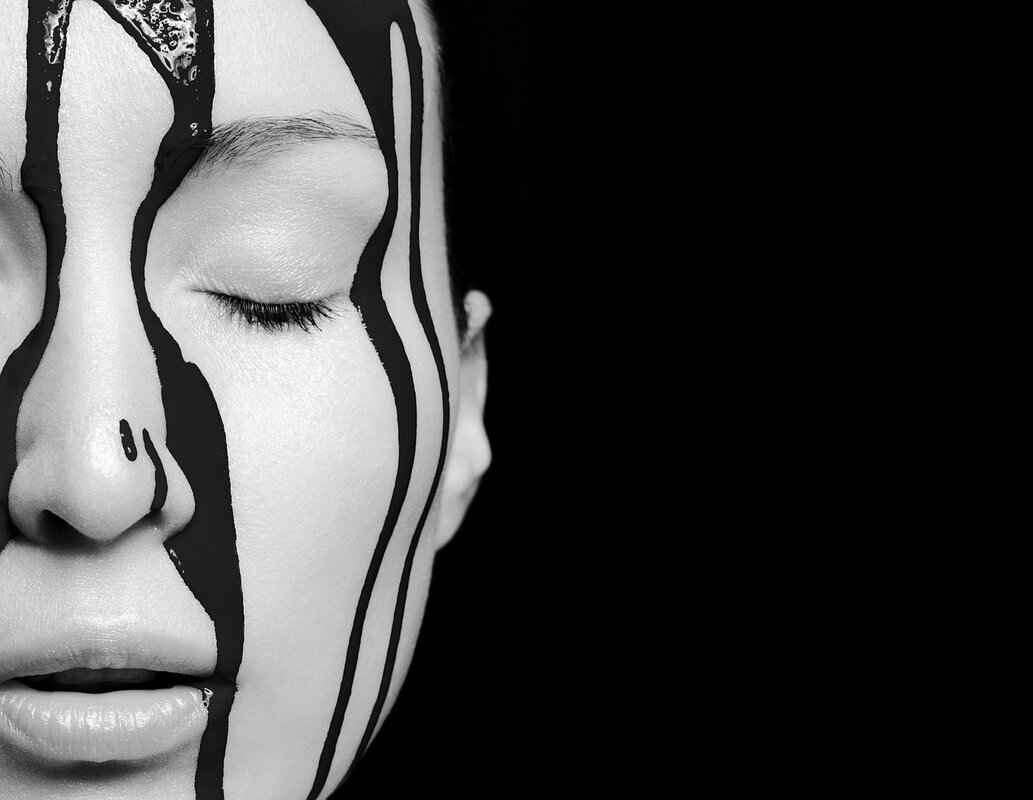
What Are the Ethical Considerations Surrounding Nude Art?
Nude art, while celebrated for its aesthetic and cultural significance, raises complex ethical questions that challenge both artists and viewers. These considerations revolve around representation, consent, and objectification, prompting critical discussions about the responsibilities of creators and the perceptions held by audiences.
Representation in nude art is vital, as it shapes how the human body is perceived across different cultures and eras. Artists must be mindful of how they depict their subjects, as these representations can reinforce or challenge societal norms. For instance, the choice of body type, pose, and context can either celebrate diversity or perpetuate narrow beauty standards. It is essential for artists to consider the implications of their choices and strive for a balanced portrayal that respects the complexity of human identity.
Consent is a cornerstone of ethical practice in nude art. Artists must ensure that their subjects are fully aware of how their likeness will be used and represented. This is particularly crucial in contemporary art, where the lines between artistic freedom and exploitation can blur. Discussions around consent also extend to historical works, where many subjects may not have had a voice in how their images were created or interpreted. Thus, modern artists are encouraged to engage with their subjects in a way that honors their autonomy and perspectives.
One of the most contentious issues in nude art is the fine line between objectification and celebration of the human form. While nude art can be a powerful expression of beauty and vulnerability, it can also risk reducing individuals to mere objects for visual consumption. This duality prompts artists and viewers alike to reflect on their intentions and interpretations. Are the works meant to provoke thought and appreciation, or do they inadvertently contribute to a culture of objectification? This question is critical in shaping the discourse surrounding nude art.
The perception of nude art is deeply influenced by cultural and societal contexts. Viewers bring their own experiences, biases, and beliefs to their interpretation of these works. As such, artists have a responsibility to create art that encourages thoughtful engagement rather than passive consumption. This can be achieved by incorporating narratives that challenge traditional views of the body and sexuality, fostering a dialogue around the complexities of human experience.
In today’s digital age, the ethics of nude art face new challenges. The rise of social media has democratized art sharing but also led to increased scrutiny and censorship. Artists must navigate the delicate balance between expressing their vision and adhering to platform guidelines that may restrict the portrayal of nudity. This situation complicates the ethical landscape, as artists strive to maintain their artistic integrity while engaging with a broader audience.
Ethical considerations in nude art are multifaceted and require ongoing dialogue among artists, viewers, and critics. By addressing issues of representation, consent, and objectification, the art community can foster a more inclusive and respectful environment that honors the diverse narratives of the human experience. As we continue to explore the significance of nude art, it is essential to remain vigilant about the ethical implications of our creative expressions and interpretations.
Consent and Representation in Art
The representation of the human body in art is a complex interplay of creativity, ethics, and societal norms. One of the most critical aspects of this representation is consent. The way subjects are depicted in art not only reflects the artist’s vision but also raises important questions about the implications of that depiction.
Consent in art refers to the agreement of individuals to be represented in a particular way. This concept is especially significant in the context of nude art, where the boundaries of personal privacy and artistic freedom often collide. Artists must consider whether their subjects have willingly consented to be portrayed and how that portrayal can affect the subjects’ dignity and identity.
Throughout history, the representation of the human body has often been conducted with little regard for the subjects’ consent. For example, many classical sculptures were created without the models’ permission, reflecting a time when the artist’s authority superseded individual rights. However, as societal values have evolved, so too has the understanding of consent in art.
In contemporary art, there is a growing awareness of the importance of consent. Artists are increasingly seeking permission from their subjects, especially in nude art. This shift reflects a broader cultural movement towards recognizing individual autonomy and the right to control one’s own image. The dialogue surrounding consent not only enriches the artistic process but also empowers the subjects, allowing them to participate actively in their representation.
The implications of how subjects are depicted in art can be profound. When artists choose to portray individuals in vulnerable states, such as nudity, they must navigate the fine line between celebration and objectification. Misrepresentation can lead to the objectification of individuals, reducing them to mere subjects for visual consumption rather than celebrating their humanity. This concern is particularly pertinent in discussions surrounding gender and body image, where the portrayal of the body can reinforce harmful stereotypes or challenge societal norms.
Artists bear a significant responsibility in how they choose to represent the human body. Ethical considerations should guide their work, prompting them to reflect on the power dynamics at play. The portrayal of the human form can either challenge or perpetuate societal norms, making it essential for artists to engage thoughtfully with their subjects. By prioritizing consent and ethical representation, artists can create works that honor the dignity of their subjects while contributing to a more inclusive dialogue about the human experience.
In summary, the intersection of consent and representation in art is a critical area of discussion, particularly in the context of nude art. As societal values shift towards greater recognition of individual rights, artists must navigate these changes thoughtfully. By prioritizing consent and ethical considerations, the portrayal of the human body can evolve into a celebration of humanity rather than a mere object of visual pleasure.
Objectification vs. Celebration
In the realm of nude art, the distinction between objectification and celebration of the human form is not merely a theoretical debate; it is a critical lens through which we can interpret and appreciate these works. This fine line influences not only the artist’s intention but also the audience’s perception and societal values surrounding the human body.
Objectification occurs when the human figure is reduced to an object for visual pleasure, often stripping away individuality and context. This perspective can lead to a commodification of the body, where the subject is seen merely as a vessel for aesthetic admiration rather than as a complex being with emotions and stories. In contrast, the celebration of the human form seeks to honor its beauty, complexity, and the myriad of experiences it embodies. This approach recognizes the subject’s humanity and engages with their narrative, fostering a deeper connection between the viewer and the artwork.
Understanding the difference between objectification and celebration is essential for several reasons:
- Artistic Intent: Artists must navigate their intentions carefully, as their work can either reinforce harmful stereotypes or promote empowerment and appreciation.
- Viewer Interpretation: How audiences interpret nude art can vary widely based on cultural background, personal experiences, and societal norms.
- Societal Impact: The way nude art is perceived can influence broader discussions about body image, sexuality, and gender roles in society.
Throughout history, nude art has oscillated between these two interpretations. In ancient Greek and Roman cultures, nude sculptures often celebrated the human form as a representation of ideal beauty and heroism. These works were typically commissioned to honor gods, athletes, and leaders, emphasizing the celebration aspect.
However, during different periods, such as the Victorian era, nude art faced significant repression and was often viewed through a lens of objectification, where the nude body was shamed or hidden. The modern era has seen a resurgence of interest in nude art, with artists like Jenny Saville and Lucian Freud challenging traditional notions by presenting the body in ways that provoke thought and discussion.
In today’s society, artists are increasingly aware of the implications of their work. Many contemporary artists aim to celebrate the human body by exploring themes of identity, gender, and body positivity. This shift reflects a broader cultural movement towards embracing diversity and challenging conventional beauty standards.
For instance, the Body Positive movement has inspired artists to depict bodies of all shapes, sizes, and abilities, countering the traditional narratives that often lead to objectification. This approach not only honors the complexity of the human experience but also encourages viewers to engage with their own perceptions of beauty and worth.
The conversation around also raises important ethical questions. Artists must consider issues of consent and representation, ensuring that the subjects of their work are portrayed with dignity and respect. This is particularly relevant in discussions about how models are depicted in art, as well as the implications of their portrayal on societal attitudes towards the body.
Ultimately, the challenge lies in navigating these complex dynamics. Artists and audiences alike must engage in a critical dialogue about the implications of nude art, fostering a deeper understanding of how it reflects and shapes our values.
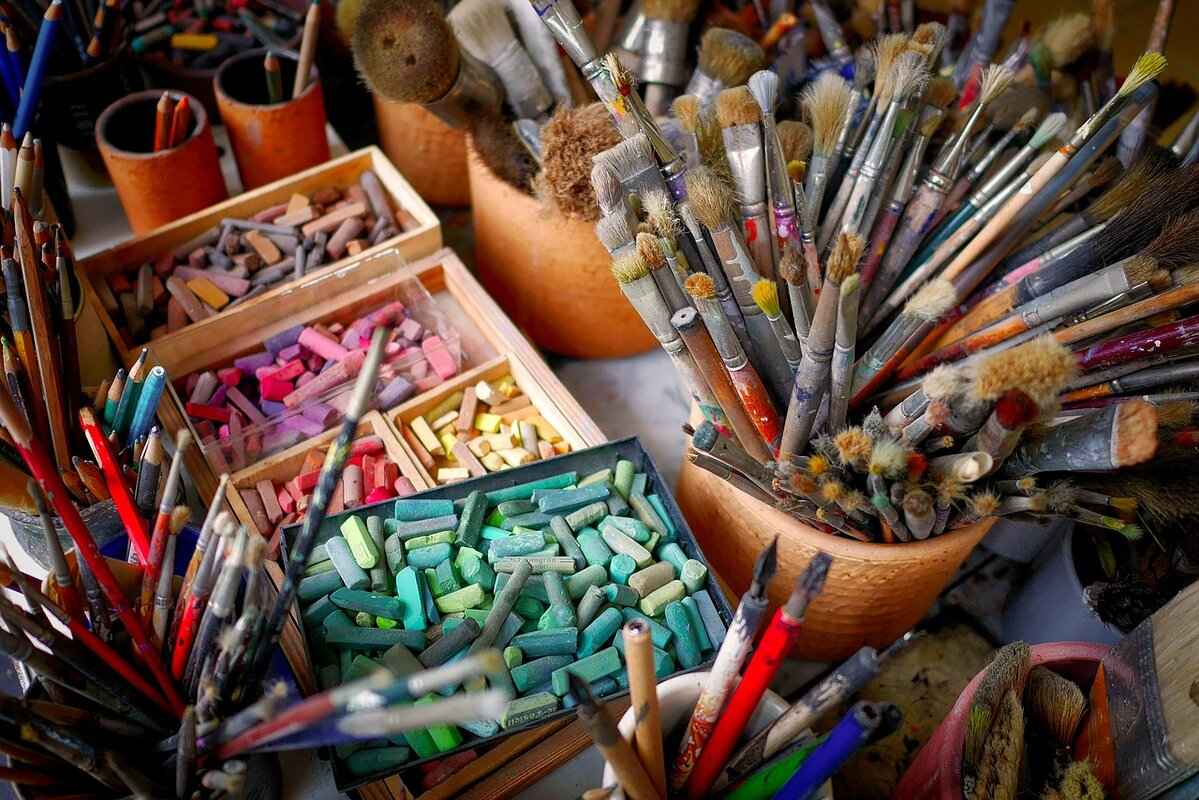
How Has Nude Art Evolved in the Digital Age?
The digital age has ushered in a profound transformation in the realm of nude art, reshaping how artists create, share, and perceive their work. This evolution has not only expanded the boundaries of artistic expression but has also democratized access to nude art, making it more visible and accessible to a wider audience. However, this shift raises critical questions regarding authenticity and artistic integrity.
With the advent of digital technology, artists have explored innovative mediums that challenge traditional notions of nude art. Digital sculpture and 3D printing are at the forefront of this revolution. These technologies allow artists to create intricate and detailed representations of the human form that were previously unattainable. For instance, artists can now manipulate virtual models in ways that enable them to experiment with proportions and textures, leading to entirely new artistic expressions.
The rise of social media platforms has significantly impacted the dissemination of nude art. Artists can now showcase their work to global audiences, fostering communities that appreciate and critique their creations. This accessibility has led to a surge in dialogue surrounding the representation of the human body, as artists and viewers engage in discussions about the nuances of nudity in art. However, this visibility comes with challenges, including censorship and societal backlash, which artists must navigate carefully.
The digitalization of nude art prompts essential ethical considerations. The ease of sharing images online raises questions about consent and the representation of subjects. Artists must be vigilant about how they portray individuals, ensuring that their work respects the dignity and autonomy of the human form. Moreover, the line between objectification and celebration becomes blurred in the digital landscape, necessitating thoughtful engagement with the audience.
Contemporary artists are increasingly using nude art to challenge societal norms and provoke critical discussions on issues such as gender, identity, and body politics. By embracing digital tools, these artists can push the boundaries of traditional sculpture, creating works that resonate with modern audiences. The integration of mixed media, including video and interactive elements, allows for a more immersive experience, inviting viewers to engage with the art on multiple levels.
While digital technology enhances creativity, it also raises questions about artistic integrity. The ease of manipulation can lead to debates about what constitutes “authentic” art. As artists navigate these challenges, they must find a balance between innovation and maintaining the core values of their artistic vision. This ongoing dialogue is crucial in defining the future of nude art in a digital context.
In conclusion, the evolution of nude art in the digital age reflects a dynamic interplay between technology, accessibility, and ethical considerations. As artists continue to explore new forms of expression, the conversation around authenticity and integrity will undoubtedly shape the future landscape of this timeless genre.
Digital Sculpture and 3D Printing
The advent of digital sculpture and 3D printing has profoundly transformed the landscape of nude art, providing artists with unprecedented tools to explore and express their creativity. This innovative technology allows for the manipulation of form, texture, and scale in ways that were once limited to the imagination. Artists can now create intricate details and complex structures that challenge traditional perceptions of the human body.
Digital sculpture utilizes software to create three-dimensional models, allowing for an exploration of abstract forms and realistic representations simultaneously. Artists can manipulate shapes with precision, experiment with proportions, and visualize their concepts in real-time. This flexibility enables a deeper exploration of themes related to the human experience, including vulnerability and beauty, which are central to nude art.
3D printing complements digital sculpture by bringing these virtual creations into the physical world. The benefits of this technology include:
- Accessibility: Artists can produce works in various materials, from plastics to metals, making it easier to experiment with different textures and finishes.
- Scalability: Artists can create pieces in multiple sizes, allowing for a broader range of exhibition possibilities.
- Precision: The accuracy of 3D printing enables the reproduction of intricate details that may be challenging to achieve through traditional sculpting methods.
With digital tools, artists are not only redefining the aesthetics of nude art but also challenging societal norms surrounding the human body. By utilizing software to create provocative and thought-provoking pieces, artists can address contemporary issues such as gender identity, body positivity, and the objectification of the human form. These explorations invite viewers to engage in critical discussions about the implications of nudity in art.
Digital sculpture and 3D printing also facilitate collaboration among artists, technologists, and designers. By merging different skill sets, artists can push the boundaries of traditional nude art. Collaborative projects can lead to innovative installations that incorporate interactive elements, inviting audiences to experience art in immersive ways.
As with any form of art, ethical considerations arise in digital nude art. Issues of representation and consent are paramount. Artists must navigate the fine line between celebrating the human form and objectifying it. Additionally, the digital realm raises questions about authorship and the authenticity of the work, as digital reproductions can be easily shared and altered.
The rise of social media platforms has provided a new avenue for artists to showcase their digital nude art. However, this visibility comes with challenges, including censorship and backlash from audiences who may not accept nudity in art. Artists must carefully consider how they present their work online, balancing the desire for exposure with the potential for negative reactions.
In conclusion, the integration of digital sculpture and 3D printing into the realm of nude art has opened up exciting possibilities for artistic expression. By leveraging technology, artists can push the boundaries of traditional forms, challenge societal norms, and engage in meaningful dialogues about the human experience. As the art world continues to evolve, the impact of these innovations will undoubtedly shape the future of nude art.
Social Media’s Impact on Nude Art
In the ever-evolving landscape of art, social media platforms have emerged as critical tools for artists, particularly in the realm of nude art. These platforms not only facilitate the sharing of artwork but also foster vibrant communities and dialogues around the often controversial subject of nudity in art. As artists navigate the complexities of censorship and societal backlash, social media serves as both a sanctuary and a battleground for expression.
Social media platforms like Instagram, Twitter, and TikTok have revolutionized the way artists present their work. Artists can now reach a global audience, showcasing their nude art without the constraints typically found in traditional galleries. This accessibility allows for a diverse range of artistic expressions and ideas to flourish.
- Community Building: Artists can connect with like-minded individuals and audiences who appreciate their work, leading to supportive networks that encourage creativity and collaboration.
- Immediate Feedback: Social media provides artists with instant feedback from their followers, allowing them to gauge reactions and refine their craft.
- Increased Visibility: By utilizing hashtags and engaging with trending topics, artists can significantly increase their visibility, attracting attention to their nude art.
Despite the benefits, artists sharing nude art on social media often encounter significant challenges. Censorship remains a pervasive issue, with many platforms implementing strict guidelines that can lead to the removal of content deemed inappropriate.
- Censorship Policies: Many social media platforms have policies that restrict or ban nudity, which can hinder artists’ ability to share their work freely. This often leads to frustration and a sense of alienation from mainstream artistic communities.
- Societal Backlash: Artists may face criticism or backlash from audiences who hold conservative views about nudity, which can discourage them from exploring this genre.
- Self-Censorship: In an effort to comply with platform guidelines, some artists may feel compelled to alter their work, limiting their creative expression.
In response to censorship and societal backlash, many artists are finding innovative ways to navigate these challenges while still expressing their artistic vision.
- Alternative Platforms: Some artists are turning to alternative social media platforms that are more accepting of nude art, creating spaces where they can share their work without fear of censorship.
- Advocacy and Awareness: Artists are increasingly using their platforms to advocate for the acceptance of nude art, raising awareness about the importance of artistic freedom and expression.
- Creative Solutions: Many artists are experimenting with different styles, such as abstract representations or using digital art techniques to convey nudity in a way that complies with social media guidelines.
The future of nude art in the digital age appears promising yet complex. As technology continues to advance, artists will likely find new avenues for expression and community engagement. However, the ongoing struggle against censorship and societal judgment will remain a crucial aspect of this journey.
Ultimately, social media has become a double-edged sword for artists in the nude art genre. While it provides unprecedented opportunities for visibility and community building, it also presents significant challenges that require resilience and creativity. As artists continue to adapt, the dialogue surrounding nude art will evolve, reflecting broader societal changes and the ongoing quest for artistic freedom.
Frequently Asked Questions
- What is the significance of nude statue art?
Nude statue art holds immense significance as it represents the beauty and complexity of the human experience. Throughout history, it has served as a mirror reflecting societal values, beliefs, and artistic expressions.
- How have cultural perspectives influenced nude art?
Cultural perspectives shape the interpretation of nude art, with different societies viewing the human body through various lenses. For instance, Eastern cultures often incorporate spirituality, while Western art tends to emphasize individualism and realism.
- What materials are commonly used in creating nude sculptures?
Artists traditionally use materials like marble, bronze, and clay. Techniques such as carving and casting are employed to create lifelike representations, while contemporary artists experiment with mixed media and digital technologies.
- What ethical considerations surround nude art?
Ethical questions in nude art often revolve around consent, representation, and the fine line between objectification and celebration. These discussions are crucial for understanding how nude art impacts societal perceptions of the human body.
- How has digital technology changed nude art?
The digital age has revolutionized nude art through tools like 3D printing and digital sculpture. These innovations allow artists to explore new forms and scales, while social media provides platforms for sharing and discussing nude art.

